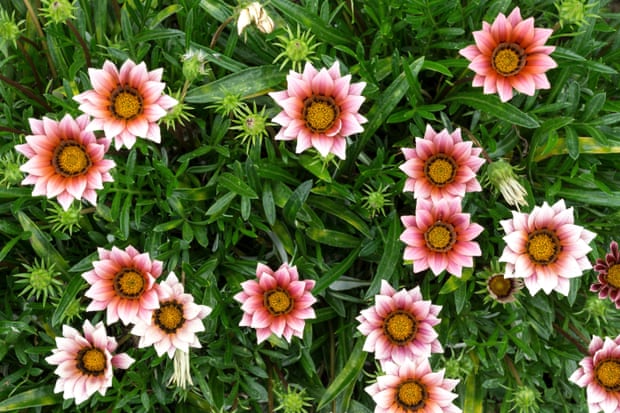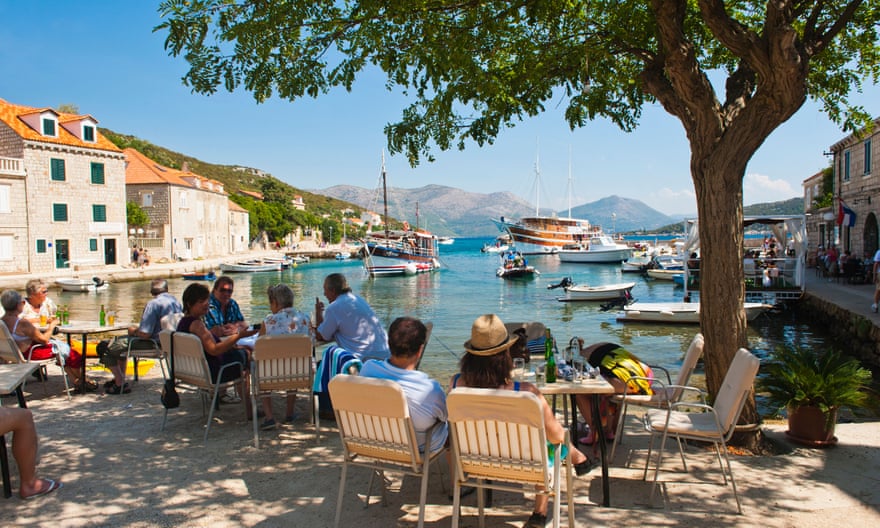
Karpathos, Greece
The mountain’s meringue peaks tattooed on a deep blue sky are a dramatic backdrop to Karpathos’s deserted beaches. It’s early July and I’m discovering this Dodecanese island, 27 miles – or four hours’ ferry ride – from Rhodes, for the first time.
The island stretches for about 30 miles, from the windsurfing beaches of Makrigialos and low-key capital Pigadia in the south to the remote seaside resort of Diafani and the traditional village of Olympos in the north. Most of it is mountainous, which means roads (there aren’t many) can be nail-bitingly steep and narrow, but the views from tiny mountain villages are spectacular.
From Apella’s sandy shore backed by high cliffs to dune-strewn Diakofti’s more remote coves, Karpathos has a plethora of beautiful beaches, along with plenty of feet-in-the water seafood tavernas. When it comes to accommodation, however, lively Pigadia is the best choice: a boutique beauty close to the sea, with pool, restaurant and friendly vibe, is Afoti beach hotel (doubles from €74 B&B).
Heidi Fuller-Love
Inishmore, Aran islands, Ireland
Inishmore is the largest and most visited of the three Aran Islands that sit at the mouth of Galway Bay, where Irish is still the main language of the nearly 900 residents. As soon as the long, stony outcrop comes into view on the 40-minute ferry ride from Rossaveel, I fall under the spell of this mythical place that has drawn people for over 2,500 years.
On arrival, I always rent a bike and pedal to the other end of the island to swim at the Worm Hole (Poll na bPéist), perhaps one of the most striking tidal pools in the world.
Nearby blue-flagged Kilmurvey beach is also great for a swim, and it’s conveniently located just down the road from Kilmurvey House (doubles from €120), my favourite place to stay on the island.
I also love the glamping pods recently opened at the Aran Islands camping and glamping site near the tiny airport. Local crab and fish pie are served at thatched Teach Nan Phaidí, which will set you up for the climb to Dún Aonghasa, a stone fort dating from 1100BC, dramatically perched on the lip of a 300-foot cliff. Hundreds of day-trippers visit the island every day of the summer but it’s easy to escape the crowds by striking out for lesser-known ancient sites, including Dún Eochla and the Black Fort. Brothers Pádraig and Aonghus Hernon will introduce even more of the island’s secrets on their four-hour Land Rover tour of lonelier spots (adult €45, child €30).
Fergal McCarthy
Flores, Azores, Portugal

I have been going to the Azores since childhood. This hauntingly beautiful chain of nine small volcanic islands rises from the depths of the North Atlantic, and romantic Flores has always been top of my list.
Remote, pineapple-shaped and just 10.5 miles long (by eight miles wide), it’s a place of extreme natural beauty, with sparkling lagoons, Eden-like waterfalls and dramatic green-carpeted cliffs. It is also a walkers’ paradise: a west coast walk, through the picturesque village of Fajãzinha to Fajã Grande and then up to Ponta Delgada, offers great views of the Atlantic, spectacular scenery and hardly anyone else about.

The flowers that are everywhere (mostly hydrangea) gave Flores its name, and dotted around this lush environment is the occasional colourfully painted chapel and baroque church chiselled out of black basalt.
I usually stay at family-owned Aldeia da Cuada (from €75 B&B), a village on the west coast that was one of the oldest settlements on the island, dating back to 1676 but abandoned in the 1960s. Now 16 of its rustic grey-stone houses have been restored. It’s a magical setting, where you fall asleep to the sound of crickets, birds and waves. Cuada has a very good restaurant, but I also like the traditional Pôr-do-Sol nearby or Casa do Rei on the south of the island, if you don’t mind the German owners’ twist on local cuisine.
Paulo Anunciação
Naissaar, Estonia

Estonia has more than 2,000 islands, and Naissaar, an hour from Tallinn by ferry, means “Women’s Island”. According to legend, it was once ruled by female warriors, and a 13th-century Danish princess was exiled there for preferring women to men.
During the Soviet occupation, Naissaar was completely off-limits to civilians, but since reopening as a nature reserve in the mid-1990s, it has flourished into a beautiful and fascinating place. It’s possible to wander around the abandoned Soviet-era structures, but I prefer the serene, airy forests, where birdsong echoes through the trees and sunlight dances through the leaves. Look for flashes of purple and red – wild blueberries and tiny strawberries – to collect for your picnic. (Note that Naissaar has no real shops, medical care, or even proper roads.)
The island is only six miles by two and very walkable. On the gorgeous and near-deserted stretches of sandy beach, with clear water and sprouting greenery, there are fireplace stands for barbecuing food. I love swimming in the cold, crisp waters of the Gulf of Finland on hot summer days. Even as a lone woman, I feel safe.
For those wishing to stay, there are campsites and cottages (from €20pp via Naissaar tourism), or Naissaar guesthouse (doubles from €40 B&B). In July, the Nargenfestival showcases the best in local classical and folk music, often with a modern, digital twist.
Aliide Naylor
Marettimo, Egadi islands, Sicily

Twenty-three years ago Fausto Gobbo, needing a break from his busy life in Bologna, decided to cycle around Sicily. Though the rugged mountains and ancient towns thrilled him, it was when he reached the tiny island of Marettimo, off the north-west coast, that he really fell in love.
Selling his fashion business, he bought some land and designed an eco-resort, Marettimo Residence (doubles from €85 room-only, two-night minimum), where we sit shaded by vines as he tells his story. The wildest and most remote of the five Egadi islands, Marettimo easily bewitches; I fall for its sleepy charm as soon as I step off the ferry from Trápani (an hour away). Known as Hiera, or “Sacred Island”, by the ancient Greeks, it’s just six miles long by one and a half wide, with thyme-clad mountains, rocky coves and sea caves, and a fishing village of whitewashed houses (the only residential area on the island).
I’d come here to hike, following paths through pine forests high into the hills, glimpsing flashes of azure sea through deep-green branches, discovering the remains of a Roman garrison and a castle overlooking the ocean. Exploring by boat is just as alluring, revealing natural pools only accessible by sea. The islands lie in Europe’s largest marine reserve and the diving here is pristine, too.
In the evenings I wander the narrow streets; fishermen sit mending nets and dogs venture out after the heat of the day. An Aperol Spritz at La Scaletta and seafood dinner at Il Veliero, with moonlit waves lapping the shore, complete the remote island life dream.
Jane Dunford
The trip was provided by Inntravel and was part of its Wonders of Western Sicily itinerary
Šipan, Elaphiti islands, Croatia

The grilled dentex (toothfish) is presented with a flourish, then expertly filleted by the waiter before being greedily devoured by me, along with a filo parcel of cheese and chard. From my straw-roofed wooden pontoon at Bowa Restaurant, I gaze at the clear waters of Vrbova bay below. Soon, after a post-prandial lie-down on the restaurant’s pebbly shore, it’s time for a swim.
Bowa is accessible only by boat or a tricky footpath – and is not cheap (lunch is at least €80 a head), but it’s one of the many pleasures on the sleepy island of Šipan. It doesn’t take long for me to see why Dubrovnik’s nobility had summer palaces here in the 16th century.
This largest of the Elaphiti islands is only an hour by ferry from Dubrovnik, but Šipan is as laid-back as it comes. It may be the only island that allows cars, but it also has the highest density of olive trees per square metre in the world. That means superlative olive oil to go with the fresh fish that’s hauled in every day in Šipanska Luka, the larger of the two villages. Suđurađ, three miles away, has the lovely Hotel Božica (doubles from €102 B&B), with infinity pool and beach. There are also some well-equipped flats with terraces, Apartments Kate, near Sudurad harbour (from €75, three-night min). On this island there’s little to do but swim, amble through olive groves and maybe take a tour of the 16th-century Skočibuha summer palace. All just a precursor to feasting on all that fish.
Mary Novakovich



